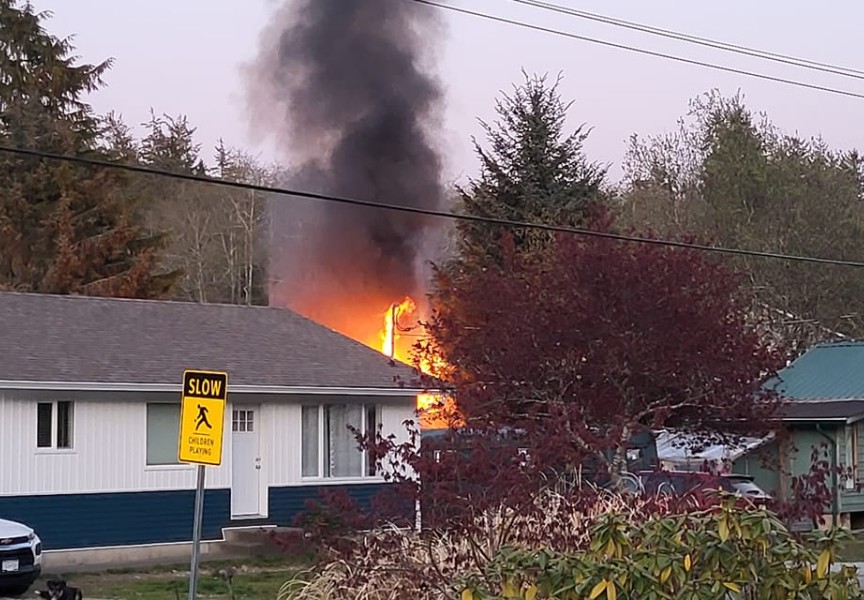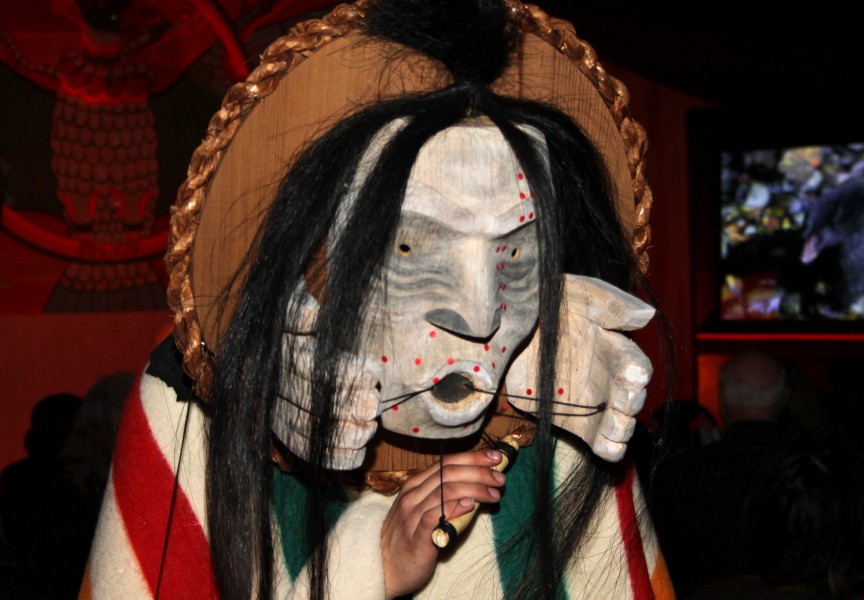Update March 16, 2015
For the record, Keith Hunter has told the province he will not be part of the “façade” of community consultation meetings with B.C. Timber Sales when, in fact, they aren’t taking place.
“I don’t want to be in the position of [BCTS] going ahead with timber sales and not telling us, and then telling us they were going to have meetings with information provided, when they don’t,” Hunter told Ha-Shilth-Sa March 15.
As a result of B.C. Timber Sales' decision to post 66 hectares of Sproat Lake area timber for sale despite the lack of an agreed-upon Cedar Management Plan, Hunter, a Tseshaht technical team member, has advised the province he will no longer be party to negotiations conducted in bad faith.
BCTS posted the four cut-blocks on Feb. 17, just three days before a scheduled meeting with Tseshaht First Nation to discuss the management plan. In a March 8 e-mail to BCTS officials Don Hudson and Glenn Piggot, Hunter advised:
“For record keeping documentation purposes of all parties involved, please be advised that I will not be serving as a point of contact on behalf of the Tseshaht grassroots community on issues relating to this BCTS file and/or the BCTS [Forest Stewardship Plan] infringements upon Tseshaht interests.”
Hunter said he could not allow BCTS to continue to put these community consultations on the record.
“I felt it was important that I let them know – for the record – that I am not being part of this façade. We’ve worked on our cultural heritage resources for nine years and we’re serious about it.”
Hunter said while BCTS may attempt to spin his withdrawal as a lack of cooperation from Tseshaht, the onus is on them to restart the process in a manner that works.
“They have to own this. I did – the whole community did – everything we could to look after the continual cultural survival of the Tseshaht people and the traditional knowledge and values. And we did everything we could to respect the timber industry. The timber industry creates jobs, and Tseshaht has people working in forestry. The community did nothing but show respect for this process.”
As for BCTS, Hunter said it is difficult to predict how a provincial body that operates with no Ministerial oversight will now proceed. He likens it to an updated version of colonialism.
“They have some relationship building they are going to have to do – and I don’t know what that is. But they are talking about taking from our children’s and our grandchildren’s cultural identity, just as they did in the [residential] schools. Now they’re taking their resources.”
Original Story
BC Timber Sales is playing fast and loose with its obligation to consult and accommodate First Nations in their traditional territories, says Keith Hunter of First Nations Wildcrafters.
And, a Feb. 26 BC Court of Appeal decision has added fuel to that allegation.
On Feb. 17, BCTS advertised for sale 66 hectares of timber in four cut-blocks off Sterling Arm Main at Sproat Lake in Tseshaht traditional territory.
The posting came as a shock to Tseshaht, according to Hunter. At issue is an understanding that BCTS would postpone selling timber in the territory until both sides had negotiated a Cedar Management Plan.
Hunter said that by putting TSL A92062 Sproat Lake out to tender, BCTS has shaken the foundation of their working relationship with Tseshaht First Nation.
“They agreed to work with us on a 400-year plan,” said Hunter, to inventory and protect Cultural Heritage Resources, such as red and yellow cedar (referred to as cypress), alder and botanical species gathered for traditional food and medicine.
“We had a meeting with BCTS scheduled for Feb. 20 and they advertised this block two days prior to that,” Hunter said.
Last October, while Tseshaht and BCTS were in disagreement over a harvest plan in the Nahmint Valley, members set up a grassroots protest that included a blockade at Gracie Main and Sterling Main.
See our story here: http://www.hashilthsa.com/news/2014-10-02/tseshaht-grassroots-enact-road-closure-force-bc-timber-sales-table
Caught in the middle were the workers sent in by Probyn and Western Forest Products to cut and haul the trees.
“[BCTS is] fully aware of what happened the last time they did this. That’s exactly what they did down in Nahmint and they are recreating that here,” Hunter said.
And on Thursday, the Court of Appeal reversed a decision ordering BCTS to pay $1.75 million in damages to Moulton Contracting Ltd for failing to inform the contractor that the Fort Nelson First Nation intended to blockade a harvesting operation in their traditional territory.
The company was unable to complete the harvest of BCTS timber and its equipment was subsequently repossessed. They successfully sued the province for damages, based on that failure to inform.
But in the appeal court on Feb. 26, the three-judge panel ruled that “there is no persuasive legal authority” that [BCTS] had to let Moulton know about any First Nations dissatisfaction.
The BCTS tender (TSL A92062 Sproat Lake) includes a now-standard clause, “2.0 Disruptions By Third Parties,” which warns that the purchaser of the license is responsible for court costs in the event of legal action by third parties, such as First Nations. TSL A92062 Sproat Lake includes one bulleted advisory:
“Specific for this TSL, BCTS is aware of the following concerns expressed by third parties: Tseshaht First Nation does not support this timber sale going forward.”
That one-sentence disclaimer is calculated to relieve BCTS of its obligation to consult with Tseshaht, Hunter explained.
“So what they are doing is not meeting their Forest Stewardship Plan legal requirements and offloading that problem onto industry, knowing they are going to have a conflict with the people who buy that timber and the First Nations that are involved in that consultation,” Hunter said.
In an email to BCTS dated Feb. 25, Hunter expressed his “most profound disappointment and utter total shock” that the Sproat Lake timber was offered for sale while Tseshaht and BCTS were still in the process of implementing the statutory requirements of the BCTS Forest Stewardship Plan regarding Cultural Heritage Resources.
When Ha-Shilth-Sa spoke with BCTS timber sales manager Don Hudson he was in Vancouver and away from his desk. Hudson said to the best of his understanding, without the paperwork in front of him, the agreement with Tseshaht was that BCTS would not sell any more timber in the Nahmint Valley, but there was no agreement to exclude the rest of Tseshaht traditional territory.
At the BCTS office in Campbell River, communications manager Vivian Thomas concurred with Hudson’s statement.
“There were some sales that BCTS had already undertaken all the operational planning on, and those are the ones that are proceeding, but they have made a commitment not to do any new sales,” Thomas said. “And there is the Sproat Lake [TSL], which is separate from Nahmint.”
Thomas quoted a letter purportedly sent to Tseshaht in November:
“BCTS continues to honour the Tseshaht request that we undertake no further operational planning in the Nahmint [Valley] until the Cedar Strategy is in place.”
Thomas said further BCTS correspondence expressed surprise that Tseshaht had taken the view that they had committed to a blanket stoppage of planning and harvesting in Tseshaht territory.
In a written statement to Ha-Shilth-Sa, Hunter said this was not an accurate portrayal of events. First, he explained, BCTS had already completed the planned sales in the Nahmint Valley contained in their 2013-2014 work plan, so there were no further sales on the horizon.
“What was in the November letter had nothing to do with the consultation on the Sproat Lake sales. We were not informed in November that BCTS had planned on doing the sales at Sproat Lake. Those sales had not been brought up in the meetings we had up until that point,” he wrote.
Hunter said the four cut-blocks within TSL Sproat Lake were not placed into the consultation process until Jan. 19. At that point, he requested that the TSL not be advertised until the matter had received full consultation with the Tseshaht community workgroup.
Hunter said a second meeting took place on Feb. 5, at which more timber sales were proposed.
On Feb. 20, BCTS and Tseshaht had a meeting scheduled to discuss the Cedar Management Plan. The posted agenda included:Discussion on the cedar management plan framework (sample plans, scope, participants, etc.); an update on the cedar inventory data preparation; an update on the cedar needs assessment, and discussions on indicators of cultural heritage values.”
Hunter pointed out there was nothing on the agenda about timber sales.
“None of the proposed sales that were brought to the Jan. 19 or Feb. 5 meeting by BCTS had completed the consultation process before BCTS posted the Sproat Lake timber sale on Feb. 17, 2015,” Hunter wrote Ha-Shilth-Sa.
“It is totally unrealistic for BCTS to expect that they could come to a meeting on Jan. 19 and then again on Feb. 5, table proposed timber sales, agree to begin to develop the indicators as an agenda item for Feb. 20, and then proceed to sale [with] the timber sales on Feb. 17, while we were working within good faith within the [Cultural Heritage Resources] consultation process with BCTS and the grassroots community that BCTS had agreed to follow.”
According to BCTS, the TSL in question contains 29,079 cubic metres (m3) of Douglas fir (75 per cent of the total), 5,312 m3 of Hemlock (14 per cent), 2,725 m3 Red Cedar (seven per cent), 1,609 m3 Maple (four per cent), 522 m3 Alder (one per cent) and 54 m3 Cypress (zero per cent).
Hunter pointed out that the inventory did not include other botanical species that BCTS has agreed to include as Cultural Heritage Resources species of importance.
“And cypress, 54 m3. What does that mean?” Hunter said. “It's impossible to make a cultural estimation based on the information that they provide.”
BCTS Woodlands Manager Norm Nalleweg conceded that the cypress estimate is pretty much speculation based on a small study sample. It may, in fact, include fallen timber.
“All it says is that the cruiser found a little bit of yellow cedar in one of their plots,” he explained. Those plots are typically one hectare.
“In this cruise plot they may have found one tree that had one m3 in it. So when you extrapolate over the entire cutblock, it comes out to 54. So it’s just an estimate based on what they found in their samples.”
Hunter said this only underlines the necessity to create a working framework to inventory the cultural value of the Cultural Heritage Resources species.
“That way, when you’ve got people out there on the ground, looking at trees, they’re looking at it through the same eyes as, for example, one of the carvers. So we need to bring in the carvers to develop those frameworks. We need to get with the cedar-bark strippers to understand better what type of trees they’re looking for.
“We put it right in [the BCTS Forest Stewardship Plan] that the cultural value of some of these species isn’t just if you log it and take it out. The cultural value could be in having the live trees there.
“That’s what we are trying to get in with [BCTS], when we looked at a long-term Cedar Management Plan—over 400 years—what are all these different things we need to look at, and how do we work that into a plan? And they agreed to work with us on a 400-year plan.”






